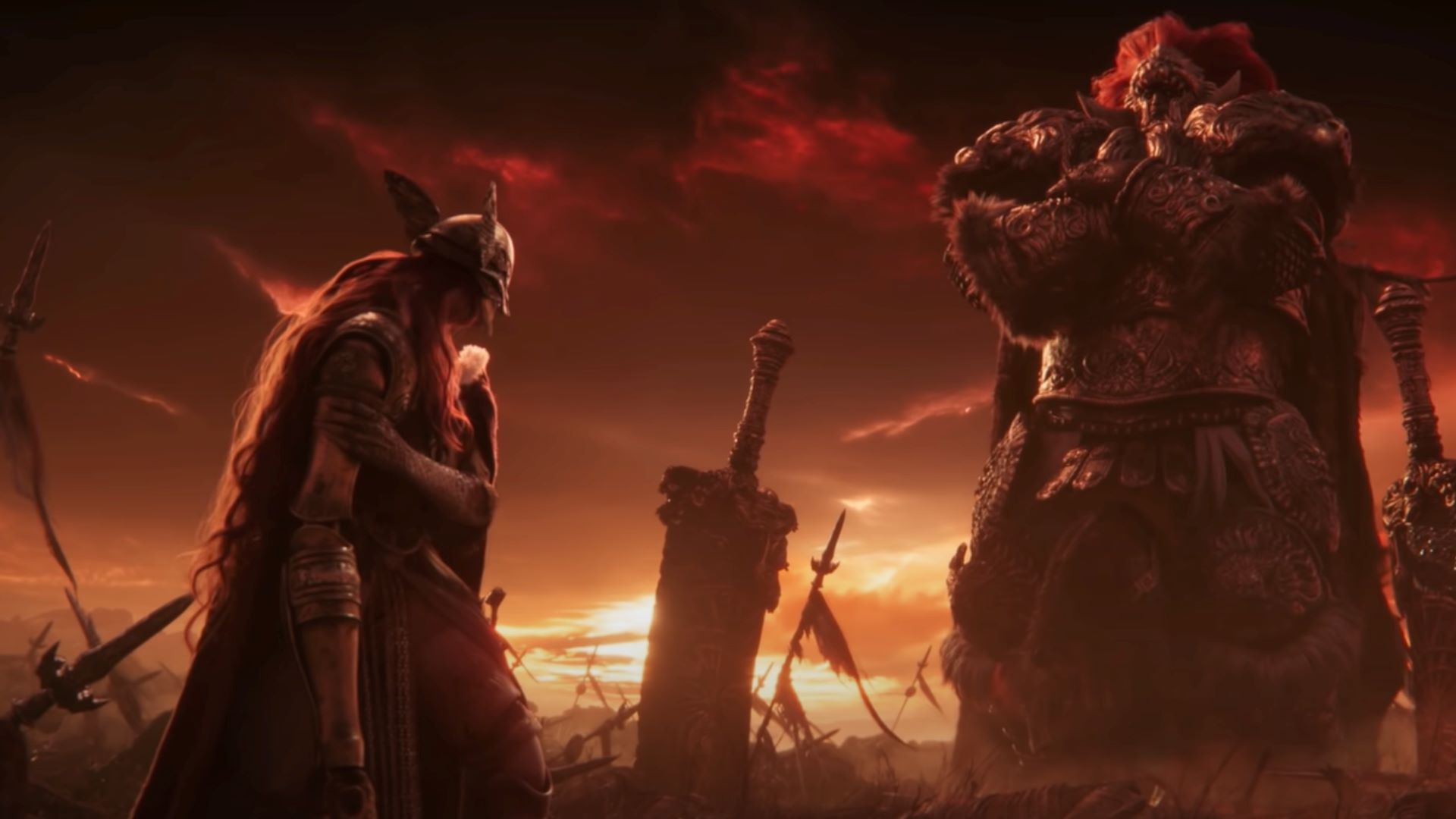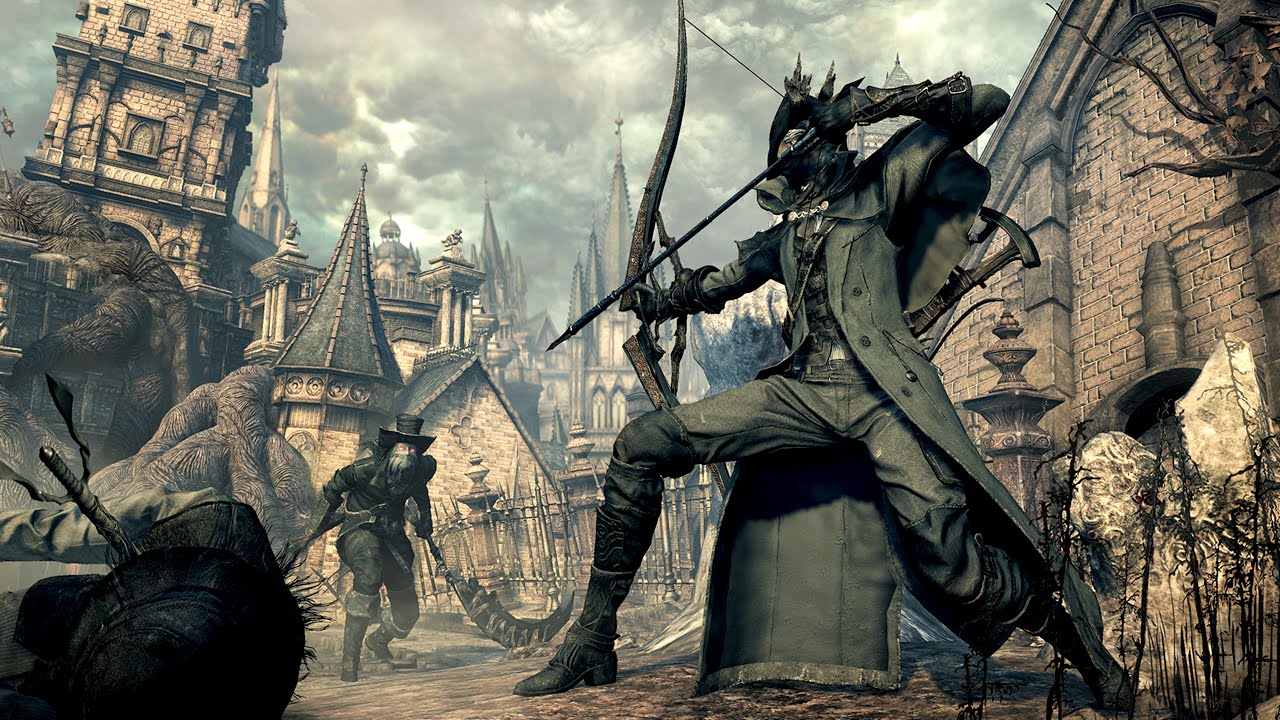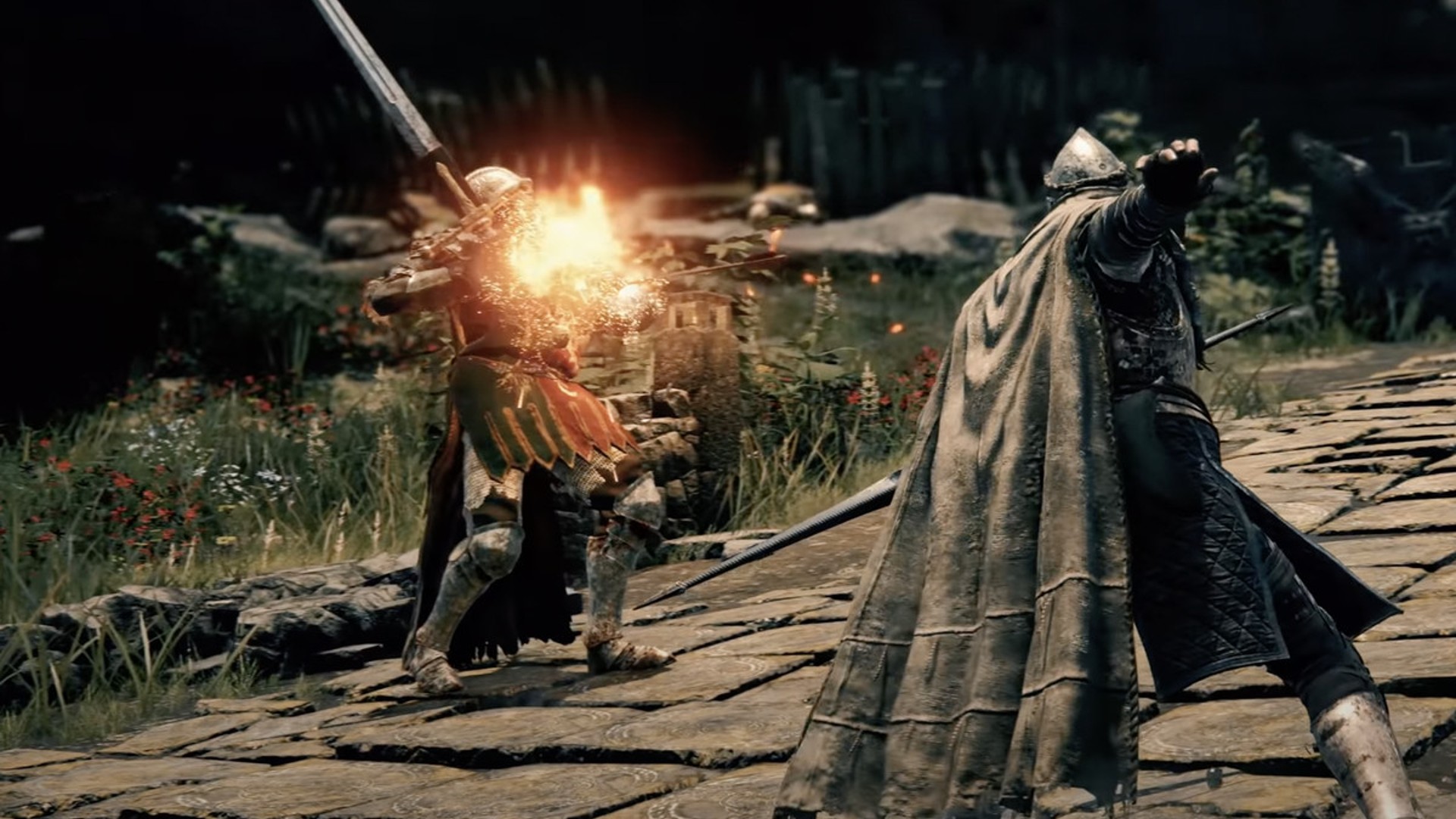Elden Ring is Miyazaki's most successful attempt to get players out from behind their shields
Vulnerability meets approachability in FromSoftware's fantasy epic

Hidetaka Miyazaki has never seemed like one for sequels, which perhaps explains why his familiar gameplay template has appeared under so many different names. The Soulsborne lineage, or whatever clunky portmanteau has supplanted the label now that Elden Ring has released, has shuffled us not just between titles but styles, settings and time periods too. But despite all the costume changes and reshuffled staging, the song itself has largely remained the same.
That is particularly true when it comes to combat – despite efforts over the years to get players to change up their tactics. Swordplay in these games is a fighting game at heart: about controlling space, dancing in and out of range, baiting, evading and punishing. Success is about understanding when it is your turn; when the enemy has left themselves open enough for you to get in a hit or two. You nip in and dash off a couple of quick R1s, then retreat to safety, raise your shield, and begin the dance anew.
From's departures from this formula suggest a certain frustration with the defensive tactics its players employ. Bloodborne's Regain mechanic urged the player onto the front foot, and in the description for one of the game's few defensive tools Miyazaki made his feelings plain: "Shields are nice, but not if they engender passivity". In Sekiro, From went even further, reframing defence as the best form of attack – but where defence involved timing as precise as a hardcore fighting-game combo. Sure, it gave us stealth, but that was no use against Genichiro and company, was it?
Similar veins


This article first featured in Edge Magazine – check out subscription options at Magazines Direct
The mechanical riffs on the Souls template in Bloodborne and Sekiro were only made possible by the stylistic ones. Only when the game looked different was it allowed to feel different. No doubt FromSoftware understood that players would play Elden Ring like a Souls game. As soon as fans see a knight with sword and shield, a mage with robes and staff, or a wretch wearing nothing but a loincloth and a smile, they make the obvious connection and revert firmly to type. Unable to force you out of your comfort zone, in Elden Ring FromSoft instead seeks to encourage it. The result is the most generous and flexible combat system FromSoft has yet produced – one you are free to engage with as much, or as little, as you like.
Early on, the Spirit Ashes feel like the game-changer. When an NPC gives us a jellyfish to call into battle, we assume they are having us on. But despite its squishy form it's an absolute tank, soaking up surprising amounts of aggro and causing plenty of problems with its status effect. A pack of skeletons that we could kill in seconds hangs around for an entire fight against a miniboss whose AI script hasn't been written with self-resurrecting support characters in mind. Not that it matters: the poor beast spends most of the fight stunlocked. While they vary in shape, size, power and utility, every Ash serves a singular primary function: to draw the boss's eye away from you, and to let you onto the front foot without fear, if only for a second.

"After 60 hours, we've barely begun to explore the depths of the Ashes Of War system".
And once you're there, you have more options than ever. Yes, you still have your light and strong attacks, the charge-move variant of the latter dealing heavy damage to even the biggest foes and putting many smaller ones on the floor. The new jump attacks have a similar, if less dramatic effect. And in another new addition, the Guard Counter, Elden Ring makes a huge concession to the defensively minded while also showing them how much fun they can have when they throw caution to the wind. When you block an incoming blow, a quick press of heavy attack performs an instant riposte, dealing significant damage and often crumpling the foe straight to the floor – though, this being FromSoft, a certain risk is baked in: if your enemy is mid-combo, you're probably eating their next hit instead.
After 60 hours, we've barely begun to explore the depths of the Ashes Of War system, which builds on Dark Souls 3's weapon skills by not only expanding a weapon's moveset with a unique attack, but also letting you tweak its attribute scaling and add permanent elemental or status effects to your swings. We've spent hours in the company of Lion's Claw, with its slick forward somersault and unstoppable finishing slam. Bloody Slash, fast and attractive and causing bleed on every hit, is well worth the small amount of health it costs to use. There are many more to uncover, but their impact on the game is already clear. No longer do you need multiple weapons to cover different situations, or to work around certain enemy resistances with consumables. The tool you need is already in your hand, the key to victory only a few menu selections away.
Sign up to the GamesRadar+ Newsletter
Weekly digests, tales from the communities you love, and more
Putting all of these systems together in battle is a delight – particularly when it leaves a boss prone on the floor, awaiting a critical hit – and when done correctly fundamentally upends the traditional Souls
This feature first appeared in issue #370 of Edge Magazine. For more great articles like this one, check out all of Edge's subscription offers at Magazines Direct.
Edge magazine was launched in 1993 with a mission to dig deep into the inner workings of the international videogame industry, quickly building a reputation for next-level analysis, features, interviews and reviews that holds fast nearly 30 years on.



